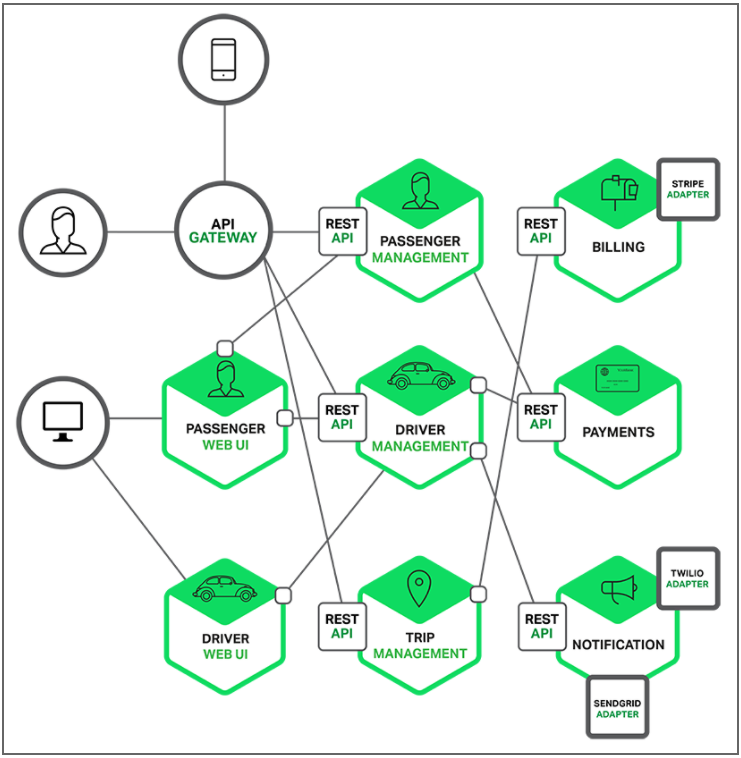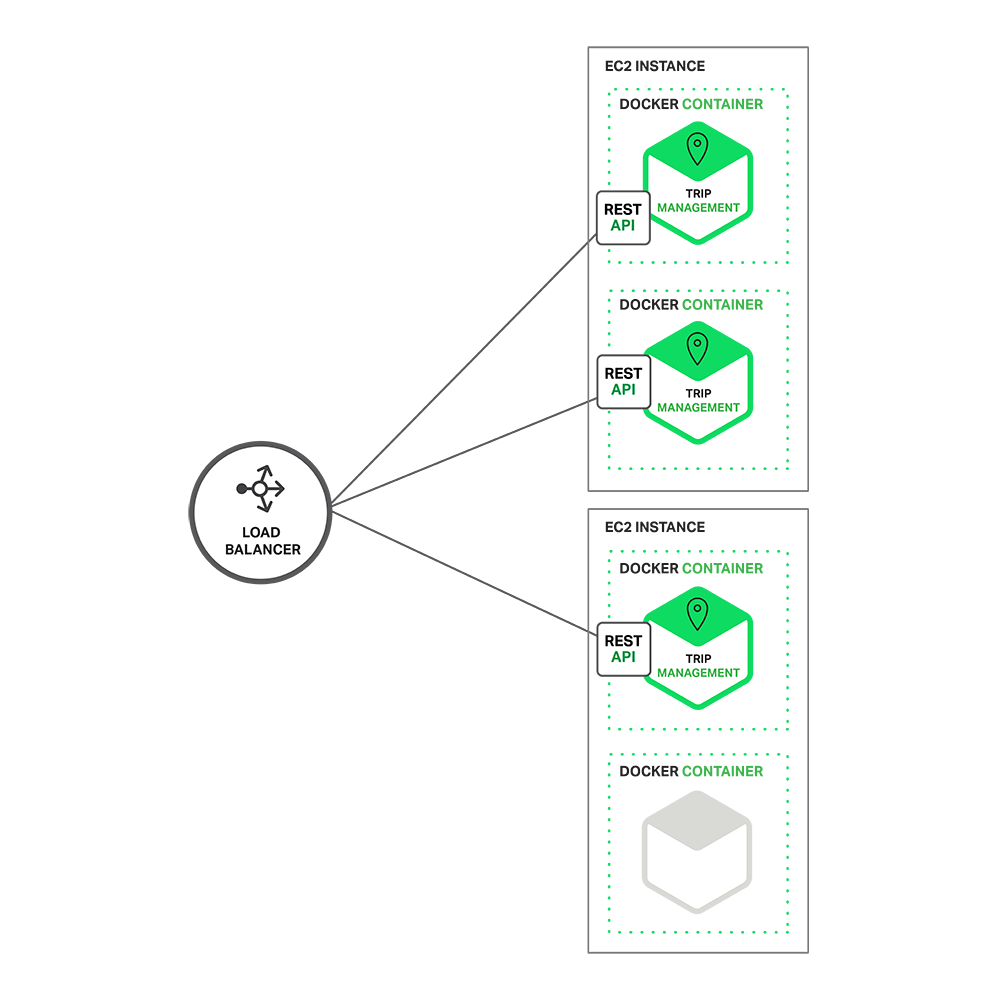Microservices – Tackling the Complexity

Microservices – Tackling the Complexity
Many organizations, such as Amazon, eBay, and Netflix, have solved this problem by adopting what is now known as the Microservices Architecture pattern. Instead of building a single monstrous, monolithic application, the idea is to split your application into a set of smaller, interconnected services.
A service typically implements a set of distinct features or functionality, such as order management, customer management, etc. Each microservice is a mini-application that has its own hexagonal architecture consisting of business logic along with various adapters. Some microservices would expose an API that’s consumed by other microservices or by the application’s clients. Other microservices might implement a web UI. At runtime, each instance is often a cloud VM or a Docker container.
For example, a possible decomposition of the system described earlier is shown in the following diagram:

Each functional area of the application is now implemented by its own microservice. Moreover, the web application is split into a set of simpler web applications (such as one for passengers and one for drivers in our taxi-hailing example). This makes it easier to deploy distinct experiences for specific users, devices, or specialized use cases.
Each backend service exposes a REST API and most services consume APIs provided by other services. For example, Driver Management uses the Notification server to tell an available driver about a potential trip. The UI services invoke the other services to render web pages. Services might also use asynchronous, message-based communication. Inter-service communication will be covered in more detail later in this series.
Some REST APIs are also exposed to the mobile apps used by drivers and passengers. The apps don’t, however, have direct access to the backend services. Instead, communication is mediated by an intermediary known as an API Gateway. The API Gateway is responsible for tasks such as load balancing, caching, access control, API metering, and monitoring, and can be implemented effectively using NGINX.
The following diagram shows how the Trip Management service might be deployed with Docker running on Amazon EC2.

At runtime, the Trip Management service consists of multiple service instances. Each service instance is a Docker container. To be highly available, the containers are running on multiple Cloud VMs. In front of the service, instances is a load balancer such as NGINX that distributes requests across the instances. The load balancer might also handle other concerns such as caching, access control, API metering, and monitoring.
Relevant Blogs:
Recent Comments
No comments
Leave a Comment
We will be happy to hear what you think about this post